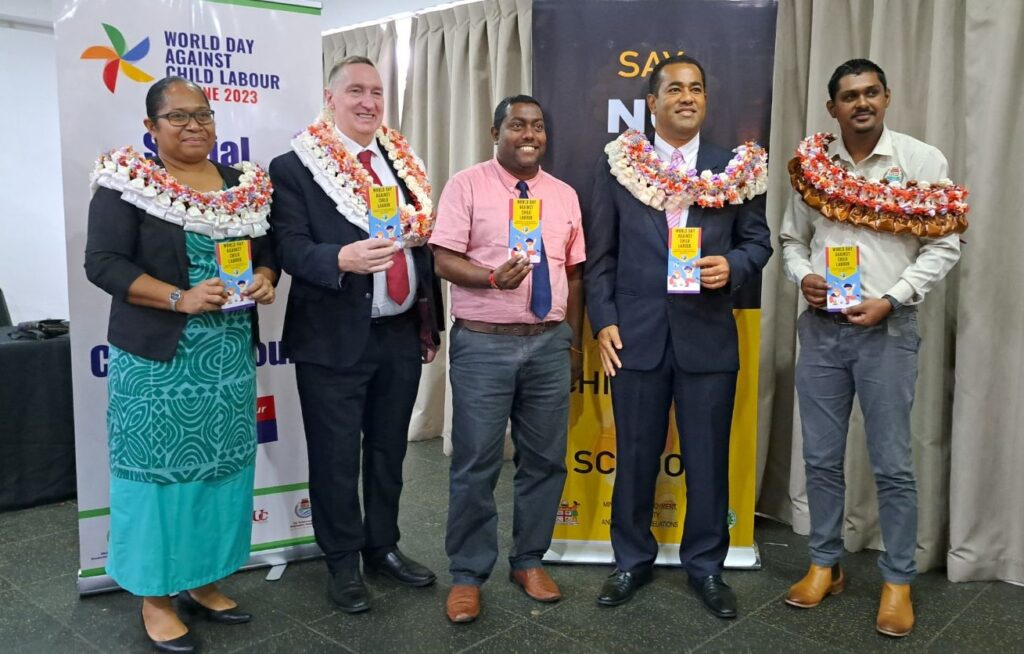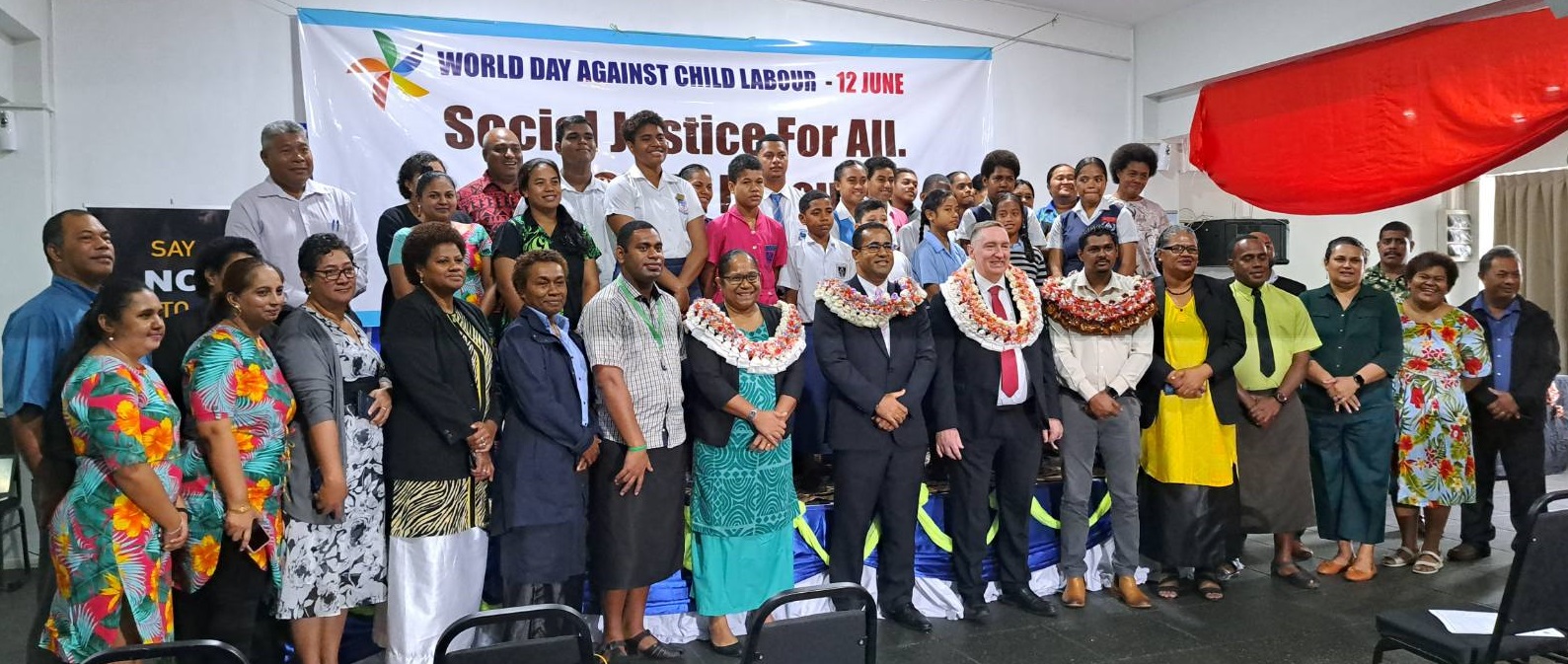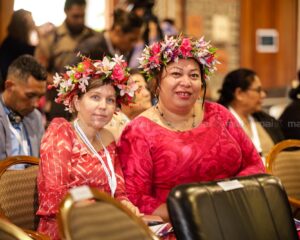Socio-economic strains, losing interest in school, and family breakdown were identified as three primary causes compelling children to abandon their studies and engage in work prematurely, contributing to increased incidents of child labour in Fiji and globally.
The factors were identified during a recent TACKLE FIJI (Tackling Child Labour through Education in Fiji) workshop which aimed to identify the root causes of child labor and develop effective strategies to bring children back into the educational system.
Sharing insights from the workshop with attendees at the World Day against Child Labour celebration in Suva today, FTUC assistant secretary and Nabua Secondary School assistant principal Rajnesh Lingam said: “Some children had to drop out of school because they need to support their parents with providing food for the family. The other was some students lose interest in school and prefer to start working at an early age, and another one is family break-up when the mother and father get separated, the child does not get the attention, the child starts losing interest in the family, so the child gets separated, then you have another prominent issue, forcing children out of school. Some students want to be independent, rather than depending on their parents, they want to start working to get some money for themselves.”
A detailed paper documenting the discussion is being compiled which Lingham says also outlines measures the workshop attendees identified aimed at reintegrating students back into the educational system and addressing the causes for their abandoning their studies.
Lingam highlighted some of these strategies, stating, “Providing assistance to families who are poor… counseling students who tend to lose interest in schools… making school extra interesting for students by way of extra-curricular activities.”
Insights gained from the workshop will be used to strengthen the TACKLE Project, which seeks to return students who have dropped out of school back into the educational system.

Efforts Being Made in Fiji to Eliminate Child Labour
Since 2011, the Fiji Government intervened in cases that were brought to its notice, withdrew 259 children from the workforce, and through government progam and other stakeholder partnerships returned them to school.
Additionally, Acting Minister for Employment Filimoni Vosarogo said the government made four pledges in 2021 including the finalisation of the National Child Labour Policy, review of the current National Employment Centre Policy, implementation of the National Occupational Health and Safety Services Strategic Plan; and formulation of Paperless Labour Inspection programs.
The government has also ratified the ILO (International Labour Organisation) Convention 182 on Worst Forms of Child Labour and Convention 138 on Minimum wage.
“Despite the impact of COVID-19 in 2021 and from early 2022, our ministry has worked tirelessly with other stakeholders to conduct necessary training of enforcement officers in order to fulfill our commitments and swiftly deliver helo and justice to our children,” Vosarogo said. “The Government has invested greatly in child welfare programs to ensure that our children are well protected and get the best possible care under the law. Government has also recognised the importance of strengthening the protection system for children in order to prevent abuse and has provided support to victims by implementing the 24-hour child help line 1325.”
Enforcement Within FCEF
Within the Fiji Commerce Employers Federation, employer members are strongly advised on adhering to standards should they wish to become a member, one of which is related to eliminating child labour and the worst forms of child labour, FCEF rep Savenaca Baro said.
“We try to promote the best work practices, and ensure our members are compliant…given that we have ratified related ILO conventions.”

Increase in Child Labour Post COVID
While there are no latest child labour incidents data- Fiji specific – Baro is of the belief that cases in the country would have risen as well pointing to global trends underlined by ILO Data.
According to ILO data, the number of child laborers has risen by approximately eight million from the pre-COVID figure of 152 million. Of the total of 160 million children (almost one in every 10) who are working, 63 million are girls and 97 million are boys. About half of these children work in hazardous jobs that affect their health and development. The Asia-Pacific region ranks second in incidents of child labour cases with 49 million children involved, trailing behind Africa with 92 million.
Baro said the figures mean meeting the Sustainable Development Goal (SDG) to eliminate child labor by 2025 is a challenging objective, calling for a step up in efforts to eradicate the practice.
“One of the ways that we feel it can be done is by raising more awareness in schools and in communities for them to understand how critical the situation is with regards to child labour and the worst forms of child labour – and identifying the role we can play to end this from happening and keep our kids safe,” Baro said adding, “Also I believe that we need to do a proper study so we can have relevant data to show the current status of child labour in Fiji – how prevalent it is which will help inform policies and what else we can do to fight it.”
A recent study was carried out by ILO on child labour which is believed to have covered Fiji as well. Findings are being compiled.









